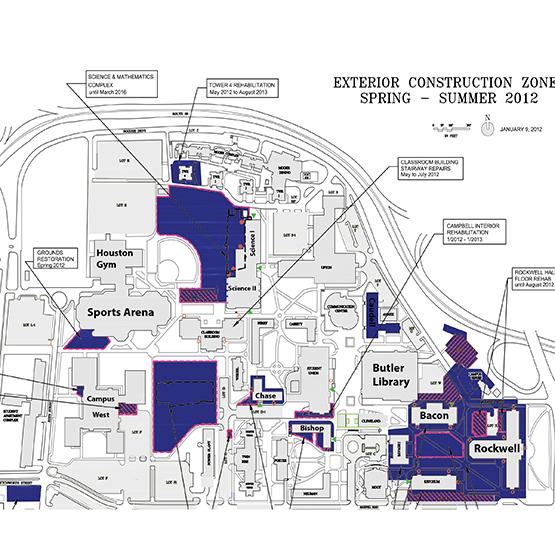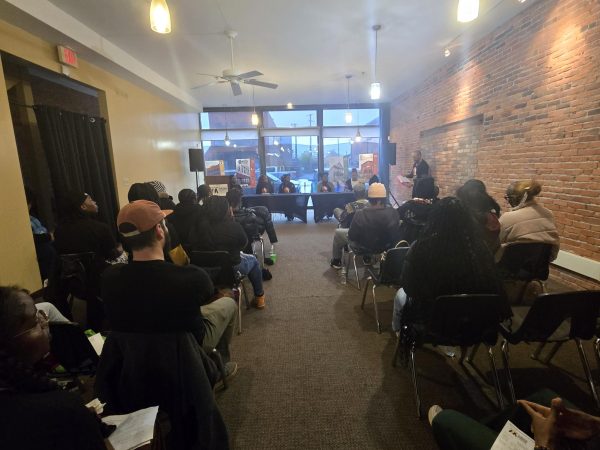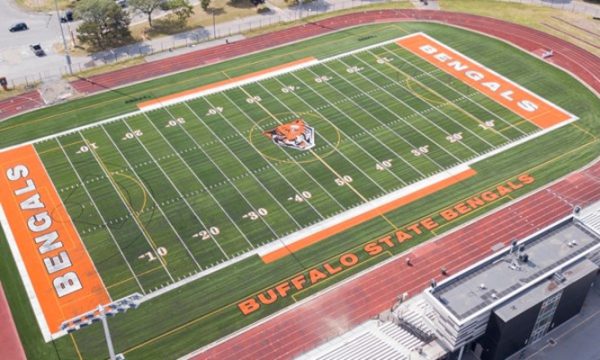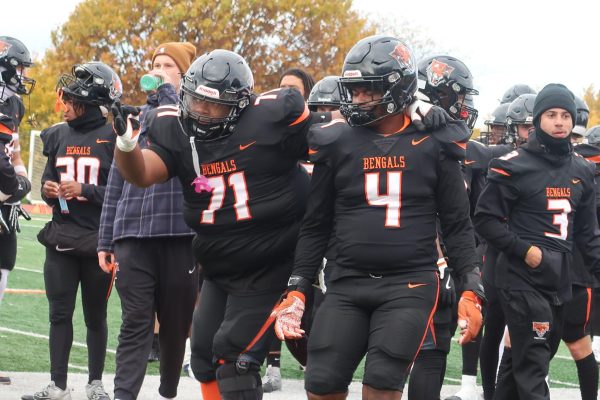Constructing a successful future at Buffalo State

This map outlines the presence of contstruction on campus. In an effort to stay current, and appeal to prospective students, campus development has been emphasized. Caudell Hall, built in 1963, is set to be renovated by 2016. The second of three phases for the Science Building is set to finish by 2015. Progress can be seen while walking through the main spine of campus.
SUNY Buffalo State has undergone extensive construction projects over the last few years and plans to continue with that trend into the future.
The past two years have seen the renovation of Campbell Student Union and Tower IV and the construction of the new Technology Building.
“Facility development, we feel anyway, is making a real difference in the student environment by creating opportunities for student development,” said Steven Shaffer, design and construction manager at Buffalo State.
There are multiple projects underway right now, but two are particularly important, according to Shaffer.
The first is the renovation of Houston Gymnasium, which began in fall 2012. It is the first major renovation to the building since its creation.
“It was built in the 1960s for the needs of that era,” athletic director Jerry Boyes said, citing the need for renovation. “That era came and went.”
The renovation includes plans for new locker rooms, weight rooms, a new fitness center and new recreational facilities. Mechanical features such as air conditioning, ventilation and heating will also be updated.
Boyes called the project “much-needed and welcomed.” He said the gym is the most heavily populated building on campus, noting its use by students across disciplines.
Boyes said the new gym could draw prospective students to the college.
“It’s not just about recruiting student-athletes,” Boyes said. “It’s about recruiting students.”
The project cost $27 million and is set to finish this summer.
The other big project under construction at the college is part two of the three-phase plan to renovate the Science and Mathematics Complex. The $50 million first phase ended last January and included updated teaching facilities and an atrium.
“It’s a night and day difference,” said Kimberly Bagley, a chemistry professor who teaches in the building. Bagley said that almost $6 million was spent on new equipment during the first phase. She said that instead of 20-year-old equipment, students are seeing what researchers are using out in the field today.
The $30 million second phase began last fall and includes the renovation of Science 1. The building will have new classrooms, clubrooms and labs, and will the house department offices of all the scientific and mathematics disciplines.
The second phase is set to finish in fall 2015. Phase three will complete the renovations to the complex.
One of the smaller projects currently underway is the replacement of exterior signs around the campus. All identification and parking lot signs will be replaced. Shaffer said that because the signs are 20 years old, they are worn and some have incorrect information, making replacements cheaper than repairing them. The new signs should be in place by fall.
Another major project starting soon is the renovation of Caudell Hall.
The project will update the 1963 building to better suit the needs of current programs and will also make the building more energy efficient. The renovation is set to begin in July, and will end in 2016, according to Shaffer.
Shaffer said that the process of choosing what construction should be done involves department chairs, deans, the vice president and the president. He said it was not a “point-scoring system,” but much more involved.
He said the group discusses the condition of buildings that need repairs, prioritizing rehabilitation over constructing new buildings. They also decide whether certain programs need attention because they are expanding or have outdated equipment.
Shaffer said that most construction projects on campus are funded through the State University Construction Fund, a SUNY agency. Projects are occasionally funded separately through donations and grants.
Because campus projects are usually state-funded, construction companies publicly bid on them. Shaffer said the companies who submit bids are required to have experience doing similar construction projects and must be financially stable.
Email: evans.record@live.com







